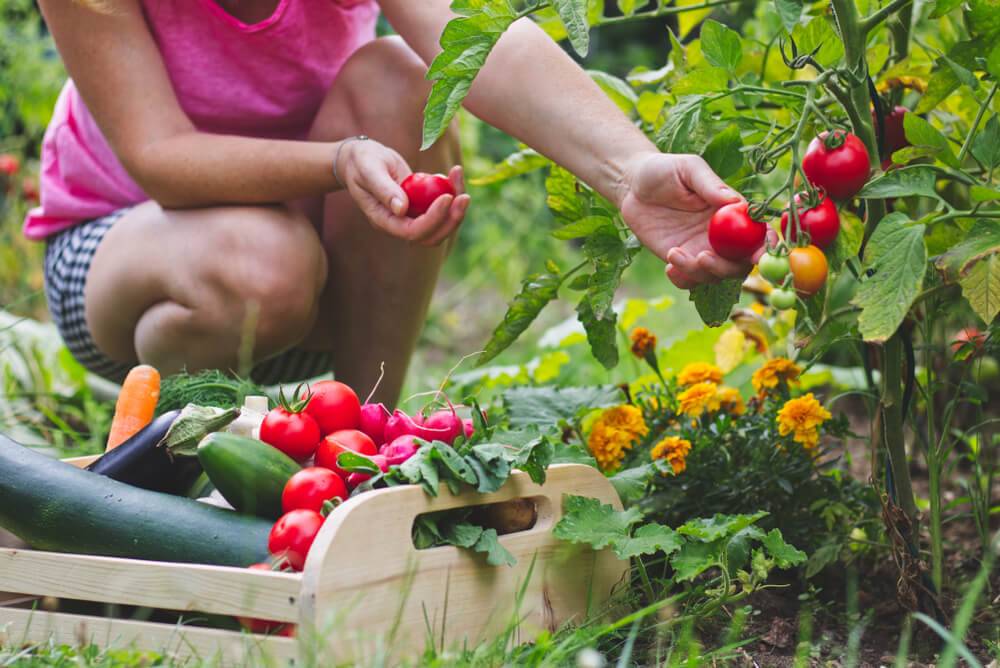
It's a delicious experience to grow your own food. Nothing like slicing into that first summer tomato, still warm from the sun, or cutting fresh herbs for a recipe. A kitchen garden provides delicious meals, delight, and a measure of food security. Don't overthink it: choose the brightest area in your home–perhaps a sunny spot in the yard, a raised bed, a large pot on the patio, or a sunny kitchen window–and plant some seeds or seedlings from your local nursery in good, organic soil. It's about that simple with at least five hours of sun per day, the correct plants, and a few pointers. Here are the four best things for beginners to grow in their kitchen gardens:
Herbs
Herbs are a great place to start because they can be grown all year, both outdoors in warm climbs and indoors on a windowsill in colder climates.
Buy some organic seeds first. For a quicker and easier start, seedlings can be purchased at your local garden nursery. Get the basics like rosemary, sage, parsley, thyme, oregano, chives, and basil, which you probably already have in your kitchen. All of them are simple to grow.
To cultivate multiple plants in one pot, find a terra-cotta pot that is at least six inches deep or, if space allows, 18 inches deep. (Tip: mint requires its own pot due to its invasiveness.) Food should never be grown in plastic, fibreglass, or treated wood since the toxins in those materials will leach into the soil and into your food.
Fill the pot with organic potting soil and sow the seeds according to the packet's directions. Put a plastic dish under your indoor plants to catch any water that goes through. Water deeply three to four times per week, depending on the weather, if you're growing in the ground or in a raised wooden bed.
Your garden will require it on a daily basis throughout the summer's hottest days. If you're growing in a pot, make sure to water it thoroughly every day. To replace the nutrients in the soil, feed your plants with seaweed extract every couple of weeks. Chives can be picked by cutting right across the plant at the base, but for all other herbs, cut only what you need, a few leaves or stems, and they will continue to grow and you will be able to enjoy them throughout the season.
Tomatoes
While we all love the big heirloom tomato, do yourself a favour and plant cherry tomatoes instead. Purchase the seeds and begin growing them indoors right away. You can use seed-starter trays or a fresh-soil-filled cut-off cardboard milk carton. Allow a couple of inches between each seed. They're ready to transplant after around six weeks. (Note: Tomatoes and the other vegetables described here, with the exception of herbs, cannot be grown inside.) They'll die out eventually; they require the warmth of the summer sun.)
Consult an online planting calendar to identify what growing zone you're in to determine when to transplant your tomatoes: it sounds hard, but it's not. Move them to a large pot (at least 18 inches deep), a raised bed, or the ground when the time comes. Avoid putting too much weight on a balcony or roof if you're using a pot or raised bed. Turn the soil and add plenty of compost if you're planting in the ground.
Even a large pot will quickly dry out, necessitating daily watering; on a raised bed or on the ground, though, you can water every few days. Every couple of months, don't forget to take a little seaweed extract for nutrients.
Beans
Beans are available in snap (such as the classic green bean) and shelling (like black beans) kinds, as well as bush and climbing varieties (climbers require a trellis, fence, or porch post to climb; bush beans do not).
Plant these straight in the soil, whether in a pot, a raised bed, or the ground; no seed starting is required. Water and feed them in the same way as we did with the tomatoes. Bush beans are ready to harvest in approximately three months, and once they start producing, pick them three or more times per week: the more you pick, the more the plant produces.
Cucumbers
These are so simple to grow that they'll quickly fill your fridge. Armenian, Suyo long, salt and pepper, and telegraph are some of our favourite cultivars for slicing and eating fresh since they have a sweet flavour.
Follow the instructions on the seed packet and plant them immediately in the soil, no seed beginning required, whether in a large pot or a raised bed. Give them a trellis to climb to save room; otherwise, the vines would sprawl all over the area.
Cucumbers should be watered and fed in the same way as tomatoes and the other vegetables on this list. You'll be slicing these for salads or juicing them to enjoy over ice or in a summer drink in around 70 days.

















